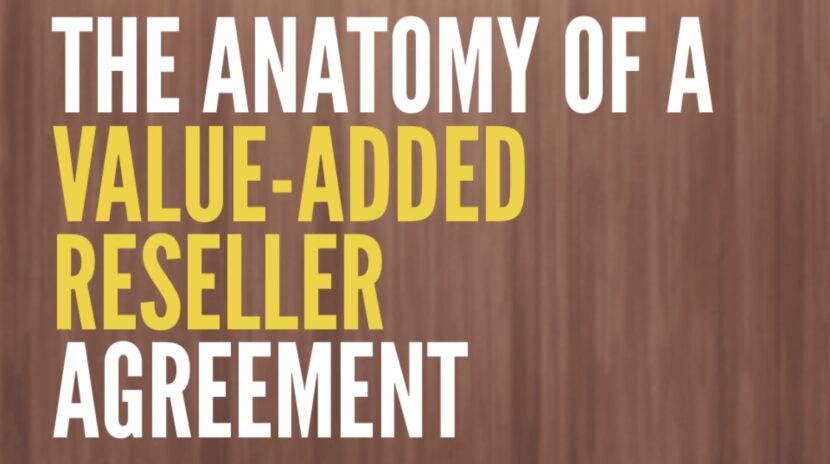A common use-case for Software businesses today is utilization of a value-added reseller (VAR).
This type of arrangement is when a VAR bundles your software in or with other products or components and resells the resulting, integrated product to end-users under their brand name.
A VAR doesn’t use your standard sales agreement, though. You should have a very specific Value-Added Reseller agreement with the appropriate provisions to protect your business, your product, and liability. This post will give you a high level overview of the anatomy of a Software Value-Added-Reseller Agreement.
Sections of your Value-Added Reseller Agreement
- Definitions – this is where you lay out what specific language in the agreement, and internally for your business, mean.
- Grant of Rights – in this section, you very specifically lay out what license rights you are granting to your VAR. Make sure you’re clear about what they ARE allowed to do with your software.
- Use Restrictions – in this section, you are to lay out what your VAR is NOT allowed to do with your software – including reverse-engineering, entering malicious code, maliciously using your trademarks, and so on.
- Integration – in this section, you are contractually letting the VAR know that they are responsible for the integration of your software – and they will be configuring, assembling, making, marketing, packaging, and shipping all integrated products using your combined software.
- No Implied Rights – here, you will reserve all rights not expressly granted to your VAR. Nothing is implied, and the VAR must act within the four corners of this agreement.
- Non-Compete – here, you can ensure that your VAR is not to build competing products against your software.
- VAR Obligations – as an extension of the Integration provision above, here you clearly lay out what the VAR is obligated to – including production, marketing, distribution, and processing of end-user information.
- Support – if you are offering your VAR or end-user’s of the product support, you will lay out what that looks like here.
- Fees and Payment – self explanatory section in which you lay out what you are charging, and what you are collecting for use of your software in the integrated product.
- Confidentiality – here, you strictly lay out what is considered confidential information, and how it should be protected along with all rights involved.
- Intellectual Property Ownership – an important section where you will clearly lay out who owns your code, who owns the resulting data, and so on.
- Limited Warranties and Warranty Disclaimer – here, you will lay out what warranties you are offering with the software to be added into the integrated product. This is generally negotiated.
- Indemnification – a section that is generally negotiated, here you lay out who is indemnified in case of a third party claim of infringement or other breach.
- Term and Termination – in this section, you lay out how long this agreement lasts, along with information about under what circumstances either party can terminate the agreement.
- Boilerplate Provisions – these are the provisions that should be in every contract – such as , assignment, governing law, indemnification, infringement remedy, force majeure, notices, etc.
- Exhibit – this is an important addition to the agreement, in which you will describe the software, the fees, and any additional specifications about your deal.
Let us Help.
This is a high level overview of what should be in a Value-Added Reseller Agreement. There are many other nuances, and these agreements should be drafted and negotiated with the help of an experienced attorney.
Kader Law can help you understand what you need to do, guide you through value-added reseller agreements with our Outside General Counsel offering. If you’re interested in connecting, feel free to contact us.
This post is not legal advice, and does not establish any attorney client privilege between Law Office of K.S. Kader, PLLC and you, the reader.
